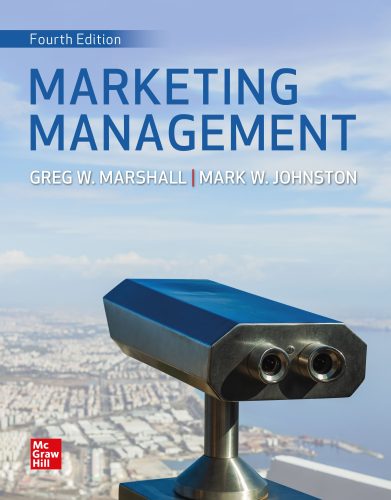Advertising seems to be losing its touch. Members of Generation Z, sometimes referred to as Zoomers, distrust online advertising more than any previous generation.[i] For marketers, this presents a problem; after years marketing to those trusty Millennials, companies now have to change their entire approach to advertising.
Some firms are turning to what has been deemed the “anti-advertisement.” Most recently, Frito-Lay brand Doritos launched a new campaign titled “Another Level.” The campaign launched with a 60 second anti-ad on YouTube – an ad that never once showed the Doritos logo or said the Doritos name.[ii]
Instead of traditional brand placements, the Doritos advertisement uses the signature red and blue bags, reminiscent of their most popular flavors: Nacho Cheese and Cool Ranch. The ad is filled with a familiar triangular shape overlaid with the words “Logo Goes Here.” The goal of the campaign is to appeal to a younger audience – and because Zoomers dislike branding, Doritos simply did away with their branding.
It was a bold move for a company who’s known for their outlandish advertising. For evidence, look no further than the Doritos Crystal Ball, the Doritos Ultrasound, or even the Cool Ranch/Old Town Road mash-up featured in Super Bowl LIV.

“Fans have come to expect Doritos to show up big with our Super Bowl advertising, and since we’re making Doritos Cool Ranch even cooler this year, we knew we had to enlist the help of a few of the coolest and most popular voices of the past year,” said Rachel Ferdinando, SVP and Chief Marketing Officer, Frito-Lay North America. “Lil Nas X and Billy Ray Cyrus are as iconic of a duo as it gets to help us introduce the new power punch to one of our most beloved flavors — Cool Ranch. Pair them with legendary actor Sam Elliott and you get pure country ranch magic in a commercial that’s bound to get our fans amped on game day.”[iv]
The Cool Ranch TVC tied in with the “Another Level” campaign. The campaign itself has been running for over a year, and it began with a complete makeover for Doritos’ online presence. The chip company deleted all previous content and posted only a series of triangles. They changed their handle to ‘@Logo_Goes_Here’ and removed all branding from their profiles. They even created a snap filter to transform faces into triangles and let the fans create their own related social content.[v]

Doritos prides themselves on being more than “just a chip. It’s fuel for disruption – our flavors ignite adventure and inspire action. With every crunch, we aim to redefine culture and support those who are boldly themselves.”[vi] The anti-ad campaign takes that disruptive, bold attitude to – aptly – another level.
Doritos is not the first brand to create an anti-ad. Nike sometimes relies solely on their signature “swoosh” for brand recognition. Starbucks built out an anti-ad campaign in 2011[vii] – the same year that Patagonia launched their iconic “Don’t buy this jacket” anti-ad. Even in the world of dating apps, Hinge markets itself as “Designed to be deleted.”[viii]
Anti-advertising plays on reverse psychology. When humans are told that they shouldn’t do something or that they can’t do it, they instinctively want to participate. They must be carefully crafted to avoid sounding arrogant, but when they’re executed well, the return on marketing investment can be great.[ix] Whether Doritos sticks to their “Logo Goes Here” branding or not, the “Another Level” campaign has certainly generated a lot of buzz around the-company-which-must-not-be-named.
Questions for Marketing Managers to Consider:
- Anti-advertising plays on reverse psychology. What kind of risks are inherent in this type of advertising?
- What is the difference between anti-advertising and counter marketing? When would each be appropriate?
- You’re a marketing manager at Doritos. How do you transition from anti-advertising back into traditional advertising? What campaign do you launch to follow “Another Level?”
[i] Adobe. 2018. “State of Digital Advertising.” Adobe. Retrieved from https://www.slideshare.net/adobe/adi-state-of-digital-advertising-2018/1
[ii] Handley, Lucy. 2019. “Gen Z doesn’t like branding, so Doritos tries a new approach.” CNBC. Retrieved from https://www.cnbc.com/2019/08/27/doritos-launches-ads-with-no-logo-and-no-brand-name-to-attract-gen-z.html
[iii] Speaking Human. 2019. “AdWatch: Doritos / Anti Ad.” YouTube. Retrieved from https://www.youtube.com/watch?v=T-CqFBYfrdI
[iv] Frito-Lay. 2020. “Doritos Brings the Chill to Super Bowl LIV in a ‘Cool Ranch’ Western Showdown Headlines by Lil Nas X, Sam Elliott & Billy Ray Cyrus.” Frito Lay. Retrieved from https://www.fritolay.com/news/doritos-brings-the-chill-to-super-bowl-liv-in-a-cool-ranch-western-showdown-headlined-by-lil-nas-x-sam-elliott-billy-ray-cyrus
[v] Walsh, Laura. 2019. “Doritos’ No Logo “Another Level” Campaign Gives Fans the Power to Shape its Social Content.” Elite Daily. Retrieved from https://www.elitedaily.com/p/doritos-no-logo-another-level-campaign-gives-fans-the-power-to-shape-its-social-content-18697767
[vi] Doritos. 2020. “About Us.” Doritos. Retrieved from https://www.doritos.com/about-us
[vii] Handley, Lucy. 2019. “Gen Z doesn’t like branding, so Doritos tries a new approach.” CNBC. Retrieved from https://www.cnbc.com/2019/08/27/doritos-launches-ads-with-no-logo-and-no-brand-name-to-attract-gen-z.html
[viii] De Luce, Ivan. 2019. “8 best ‘anti-ads’ that sold you a product by telling you not to buy it.” Business Insider. Retrieved from https://www.businessinsider.com/most-famous-anti-ad-campaigns-marketing-history
[ix] Usher, Travis. 2018. “What are Anti-Ads?” The Brave Marketeer. Retrieved from https://ekstasyblog.com/2020/02/28/what-are-anti-ads/

